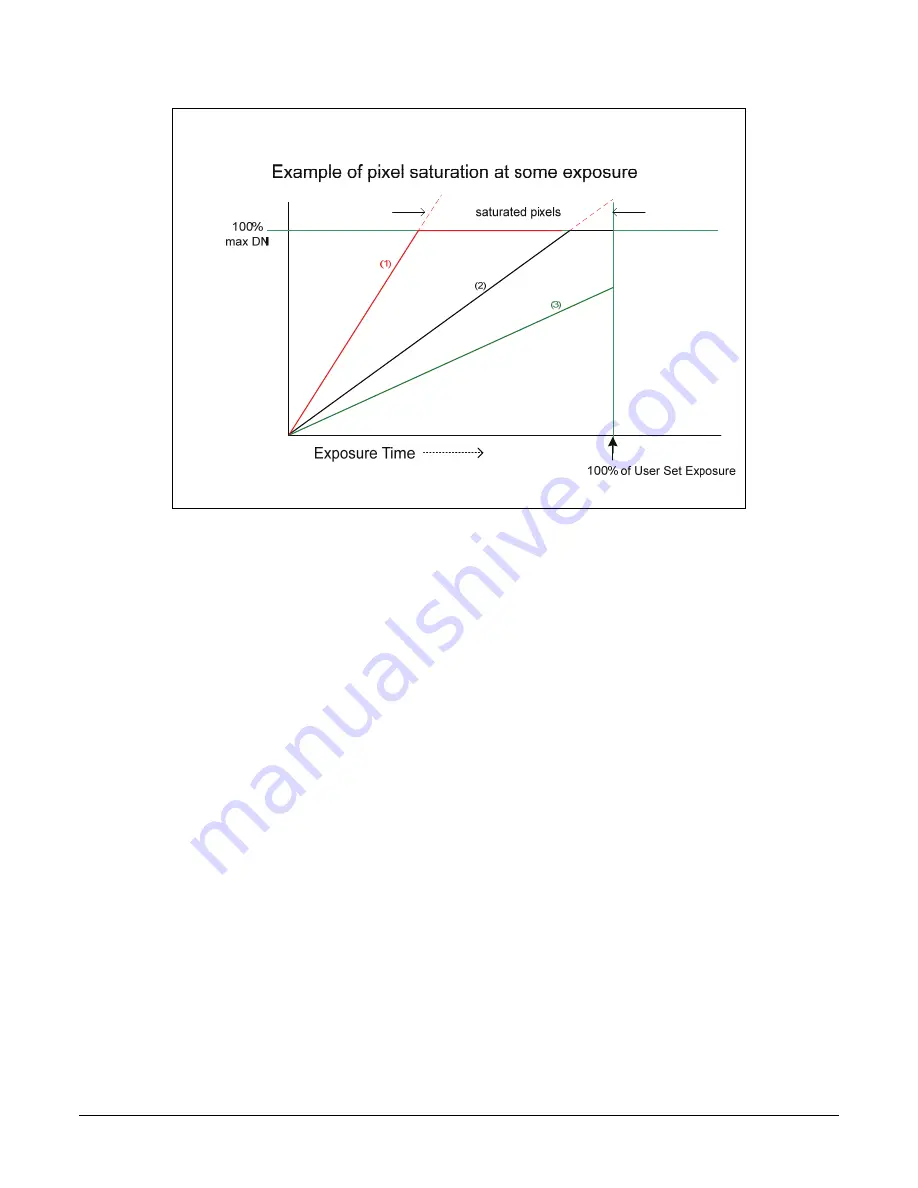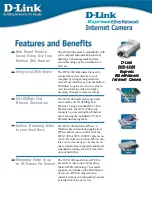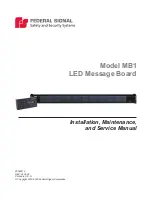
Genie_TS_Series GigE Vision Camera
Operational Reference
61
percentag
e
of F
ull We
ll
Curve (1): Represents a pixel that is overexposed quickly, long before the end of the exposure
time. The user decides to ignore these areas of the image.
Curve (2): Represents a pixel that becomes overexposed shortly before the end of the
exposure time. Pixels such as this represent candidates for the multi-slope feature.
Curve (3): Represents a pixel that is not overexposed for the set exposure time.
Simply reducing the exposure time, such that pixels similar to curve (2) are not saturated,
would reduce the gray level of pixels such as curve (3). This solution often is not acceptable.
The Multi-Slope feature can effectively extend the dynamic range for pixel exposures such as
curve (2), while maintaining the full linear exposure for pixels such as curve (3), as explained
in the following section.
Note that some pixels, as represented by curve (1), might still saturate. The multi-slope feature
controls might only provide a compromised solution dependent on the imaging setup.
The following image shows overexposure of the bright sky but proper exposure in the medium to
darker gray areas. This is a classic example of a camera’s limited dynamic range.
















































